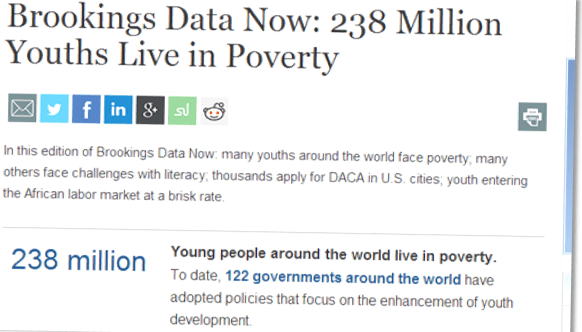This edition of Brookings Data Now highlights five data points about the Supplemental Nutrition Assistance Program (SNAP), the nation’s largest program addressing domestic hunger. Formerly known as “food stamps” and administered by the U.S. Department of Agriculture, an estimated 47 million or more Americans receive this supplemental assistance.
|
|
Percent of American households reporting conditions indicating food insecurityThe rate among children is 22.4 percent. |
Average monthly per-person SNAP (“food stamps”) benefitThe average monthly per-household benefit is $275. |
|
| 1.1 million |
In 2010, number of working mothers and their children who would have fallen below the poverty level without SNAP benefitsThis is in an average month. In 2010, SNAP constituted 20 percent of the income of working mothers who received SNAP benefits. |
| 55% |
Percent of SNAP households within nation’s largest suburbs, in 2011Four years earlier, about half of SNAP households were located in suburbs. From 2007-11, the percentage increase in SNAP households rose much faster in suburbs than in cities. |
| 90% |
Nearly 90 percent of SNAP recipients live in a household with at least one person who is a child, disabled or elderlyAbout 40 percent of children in the lower-middle class experience either or both food insecurity and obesity. |
Colleen Lineweaver contributed to this post.
The Brookings Institution is committed to quality, independence, and impact.
We are supported by a diverse array of funders. In line with our values and policies, each Brookings publication represents the sole views of its author(s).





Commentary
Brookings Data Now: 5 Facts about SNAP
December 5, 2013